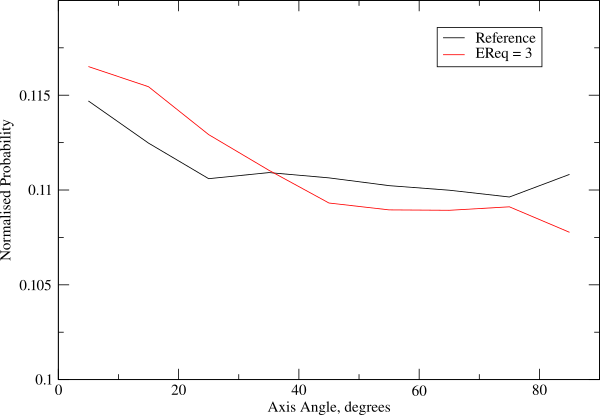Step 9 - Compare Data
In the next two sections we’ll compare both the centre-of-geometry RDF and the axis angle map between the reference and refined simulations. How you do this is really up to you - you can load any of your restart points into Dissolve to see the data contained within, and then either:
- Export specific datasets to files and re-plot them side-by-side in your graphing software of choice.
- Take image snapshots / copy graphs to the clipboard and paste them in a document elsewhere.
- Run two copies of Dissolve, and load different restart points into each, and compare “interactively”.
In the following sections we’ve exported the basic 1D curves and plotted them in external software, and we compare the 2D data side-by-side. Your results won’t look exactly the same, but should show the same trends.
Centre-of-mass Radial Distribution Functions
We’ll begin with the centre-of-mass (ring centre) RDFs.

Equilibrated and refined centre-of-mass RDFs
As you can see the differences are quite subtle, but they are there. The refined (red) simulation shows a decrease in the main peak intensity, and an increase in probability of finding molecules at the shortest contact distances (around 4 Å). Looking at the probabilities between z-axis angles we observe that “flatter” angles are more likely in the refined simulation:

Equilibrated and refined Z-axis angle distributions
These functions only give us a hint at what the structural changes in the liquid are, however, and we need to combine them with the distance-angle map.
Distance/Angle Correlations

Equilibrated and refined distance/angle maps
The 2D function calculated by
